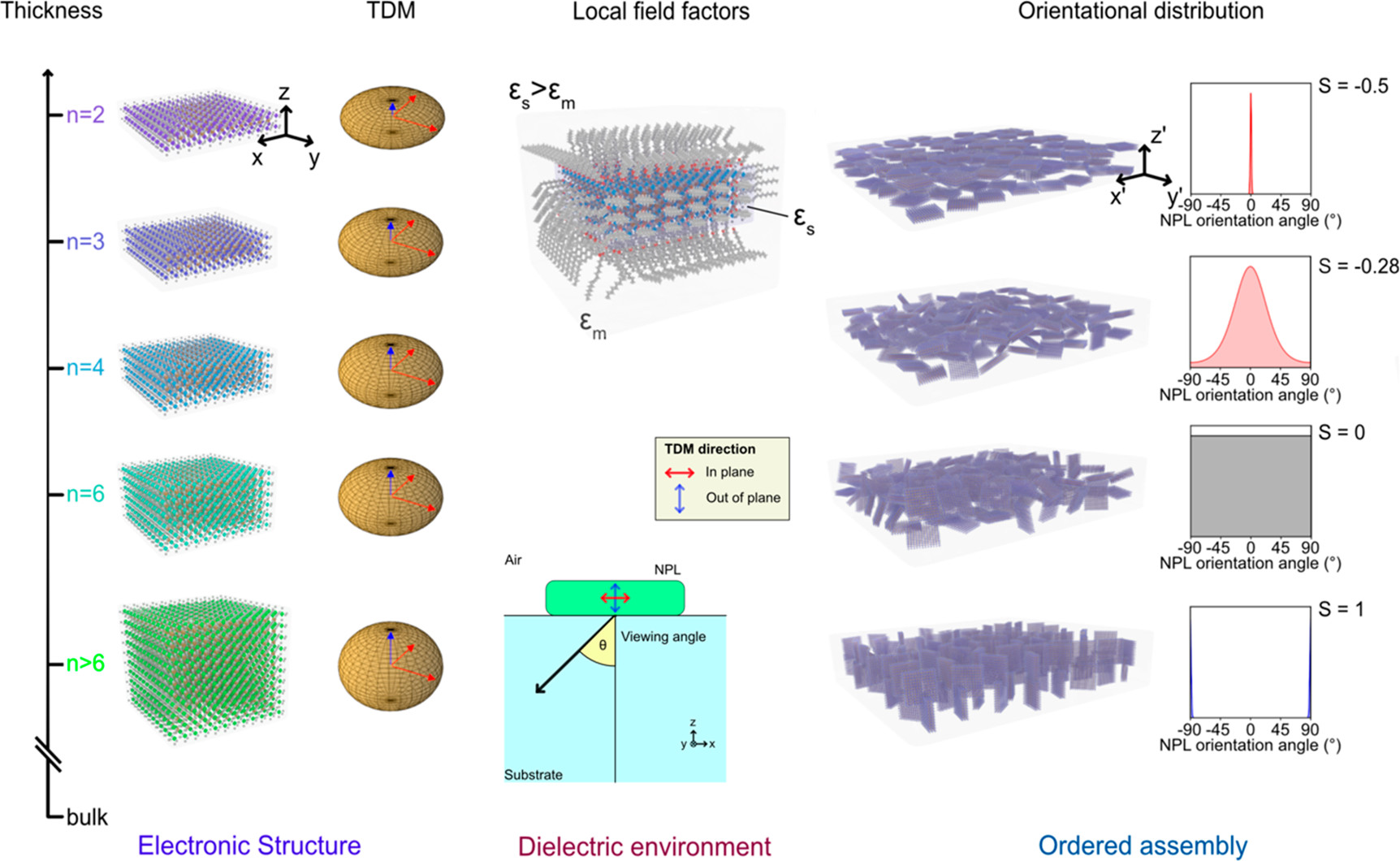[ACS Nano] Confinement-Tunable Transition Dipole Moment Orientation in Perovskite Nanoplatelet Solids and Binary Blends
Our multiscale analysis and photophysical characterization reveal that the transition dipole moment orientation in perovskite nanoplatelet solids is largely confinement-tunable.

Tuning the transition dipole moment (TDM) orientation in low-dimensional semiconductors is of fundamental and practical interest, as it enables high-efficiency nanophotonics and light-emitting diodes. However, despite recent progress in nanomaterials physics and chemistry, material systems that allow continuous tuning of the TDM orientation remain rare. Here, combining k-space photoluminescence spectroscopy and multiscale modeling, we demonstrate that the TDM orientation in lead halide perovskite (LHP) nanoplatelet (NPL) solids is largely confinement-tunable through the NPL geometry that regulates the anisotropy of Bloch states, dielectric confinement, and exciton fine structure. We further quantified the role of uniaxial ordering during NPL assembly in modifying the macroscopic emission directionality of thin films, which is especially important in actual optoelectronic devices. Our theoretical framework successfully corroborates the previous prediction of exciton bright level order reversal with experimental evidence of a counterintuitive reduction of in-plane dipole ratio in ultrathin (one- and two-monolayer-thick) NPLs, even at room temperature. More interestingly, the NPLs retain their TDM orientation in binary blends irrespective of interparticle energy transfer, owing to the phase segregation and NPL–NPL decoupling, enabling the design of films whose fluorescence exhibits an intrinsic angle-dependent color gradient.